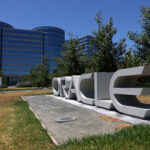Despite the record losses terrorism wreaked on the insurance industry since the Sept. 11 attacks on the World Trade Center, the global insurance business not only remains on solid footing with the powerful backing of European and U.S. reinsurance giants but is even proving a magnet for new investment, said Standard & Poor’s (S&P) in a recently released report.
“With capital-raising initiatives underway, we are confident the industry will not only survive, it will prosper going into 2002,” the report cited Don Watson, director of S&P’s insurance analytics team in New York, as saying. “Depending on new loss activity, we should see a very profitable year in 2002, and 2003 will be well positioned for a profitable performance based on expected rate increases.”
The sharing of risk across the Atlantic Ocean accounts for much of the tenacity insurance ratings are showing, said the report, Global Insurance Remains on Solid Ground Following Terrorist Attacks.
“European insurers, and particularly reinsurers, carry almost half of the current net loss estimates,” said Christian Dinesen, a director at S&P’s Financial Services Ratings. “The fact that the largest ever insured loss is spread over a wide range of international insurers and reinsurers shows the muscle behind the inherent strength of the global insurance system.”
Insurers based in the U.S. account for about 42 percent of current loss estimates, with Germany (15 percent), the U.K. (13 percent), Switzerland (11 percent), and Bermuda (9 percent) picking up the rest.
The study noted that the 20 insurers and reinsurers with the greatest exposure to the World Trade Center attacks, together accounting for about 80 percent of total loss estimates, command almost $300 billion in capital. None is rated below the “A” category (strong), and none has exposure large enough to threaten its solvency. Although some additional downgrades may follow the six that have occurred since the attacks, the overwhelming majority of exposed companies are expected to maintain secure financial strength ratings.
“We’re seeing only a handful of lower ratings, though there is reduced capacity by the industry to shoulder another catastrophe,” Watson said.
In the wake of Sept. 11, S&P has placed 23 insurance entities on CreditWatch, but Watson expects some of these to be resolved with an affirmation of the rating that existed prior to the attack, largely reflecting the successful efforts of insurers to raise capital.
The industry is also finding crucial support from investors and lenders drawn to the much firmer pricing environment and increased profitability that inevitably follow a major insurance catastrophe.
After insurers lose a significant chunk of capital, there is a retrenchment in capacity, coinciding with increased demand, said the report. Rate increases of 100 percent or more on loss-exposed policies are not unusual. In January 2002, when about 60 percent of commercial-lines contracts come up for renewal, increases could easily average more than 20 percent, even while insurers reduce exposure to terrorism losses by tightening contract terms and raising deductibles.
Topics Carriers Profit Loss Reinsurance
Was this article valuable?
Here are more articles you may enjoy.


 Billionaire Ellison Is Moving Oracle to Nashville From Texas
Billionaire Ellison Is Moving Oracle to Nashville From Texas  The Future Is Near for Self-Driving Trucks on US Roads
The Future Is Near for Self-Driving Trucks on US Roads  Florida Governor Signs Wind-Mitigation Funding Bills for Homes, Condos
Florida Governor Signs Wind-Mitigation Funding Bills for Homes, Condos  Growing Progressive Set to Hire 10,000+ in Claims, IT, Other Roles
Growing Progressive Set to Hire 10,000+ in Claims, IT, Other Roles 

